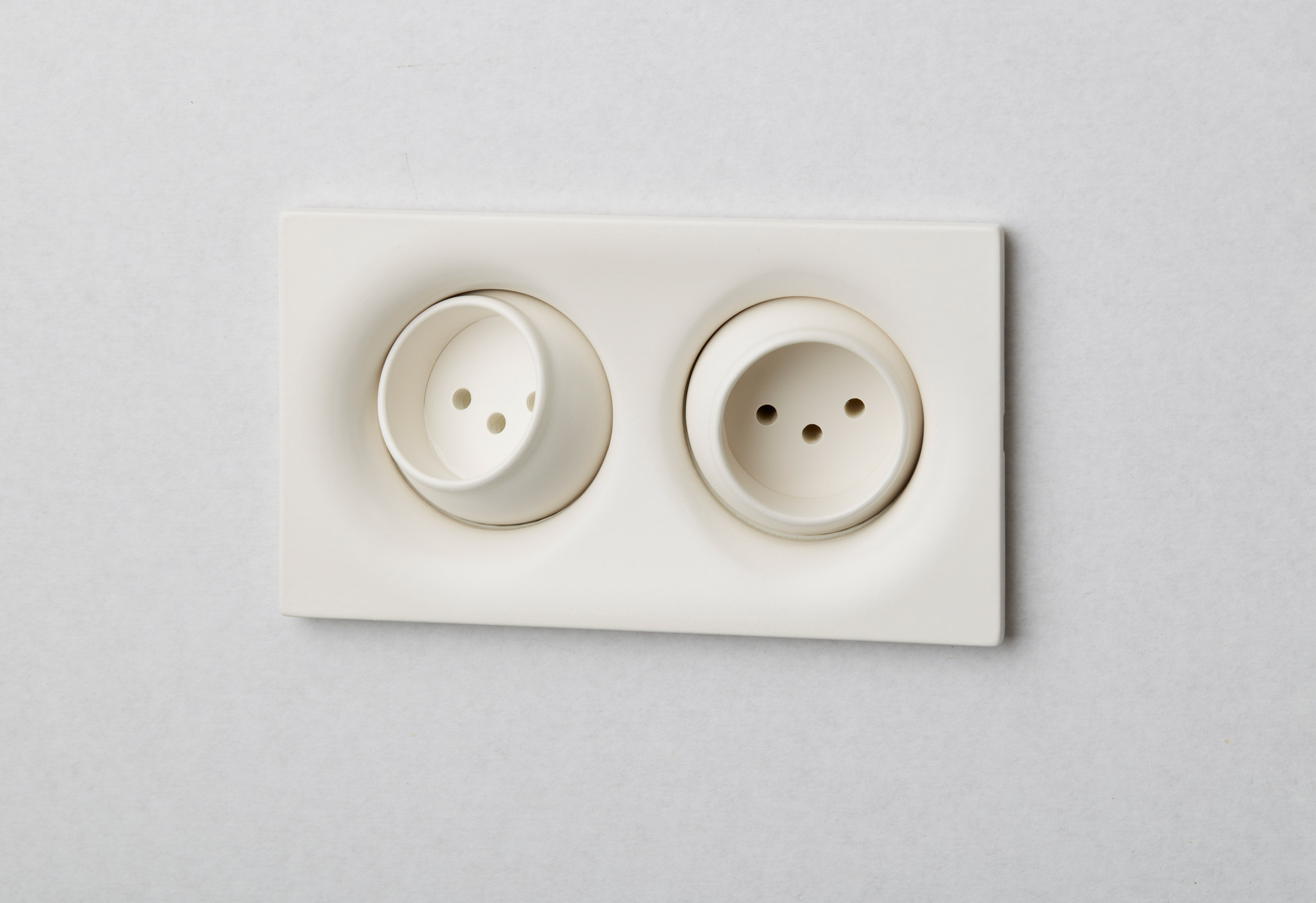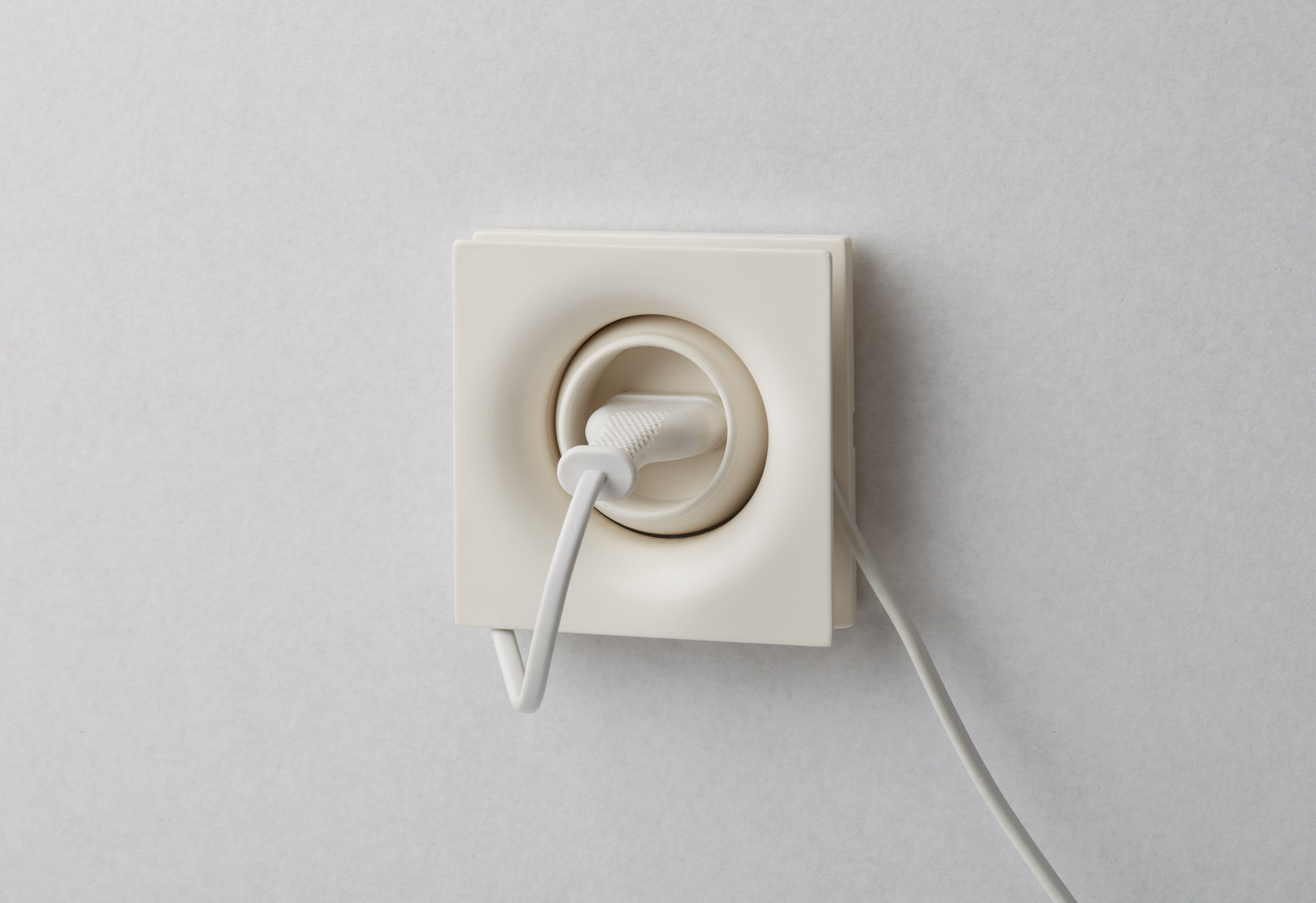#plugs
Commenter calls collection of light switches crafted from animal bones "fascinating"


In this week's comments update, readers are impressed by a collection of light switches crafted from bovine bones and discussing other top stories.
ÉCAL graduate Souhaïb Ghanmi has catalysed conversation by turning waste bovine bones from the meat industry into a collection of light switches and electrical outlets.
The Elos range features sinuous silhouettes modelled on different parts of the human skeleton, including a socket designed to resemble the head of a thigh bone that is capable of rotating in its baseplate like a hip joint.
"Very interesting idea and cool designs"
Readers are impressed. "Very interesting idea and cool designs," praised H Bray. "Just make sure the bone smell is long gone. I would hate to have my dog start chewing the wall sockets and get zapped."
"I'm in love with this," added Charles Kelso. "The material is fascinating, but the forms are incredible. The light switches, in particular, are a lovely mix of organic and minimalist design."
Tara agreed: "They are so beautiful and it makes sense to have more flexibility regarding directional use. The materials are waste materials, so I can't see why it matters what the materials actually are. Waste should be used? I guess the aim is to move away from factory farming, but until we reach that day let's make use of the waste created by such industries."
"One for the vegans..." concluded Logomisia.
Do you agree with the comments? Join the discussion ›
 Putting beehives in cities is "very dangerous" to other pollinators says bee expert Paula Carnell
Putting beehives in cities is "very dangerous" to other pollinators says bee expert Paula Carnell
Commenter says they would "prefer to change architecture than cut an old tree"
Readers agree with bee expert Paula Carnell, who says architects should include wild areas in their projects, plant trees in the ground rather than in pots and discourage urban beekeeping to encourage biodiversity.
"Plant more plants, everyone," said Chris.
"Old trees are valuable," continued The Bee Keeper. "I would prefer changing the architecture instead of cutting an old tree."
"Most plants in our roof garden in Notting Hill are bee supporting," concluded Cezary Marek. "I love watching the selfless creatures working hard. No idea where they fly in from, but they always do. Seems right that we gave up on installing a beehive there."
Do you have an opinion on encouraging biodiversity amongst bees? Join the discussion ›
 SOM has designed a Florida courthouse with a glass and fluted metal exterior
SOM has designed a Florida courthouse with a glass and fluted metal exterior
Reader calls design for federal courthouse in Florida "elegant, dignified and fuss-free"
Commenters are discussing Skidmore, Owings & Merrill's (SOM) design for a new 10-storey federal courthouse in Fort Lauderdale, Florida. It features a fluted metal and glass exterior informed by classical architecture.
"Looks elegant, dignified and fuss-free," said Romeo Reyes. "Interesting how the sunlight will enhance the fluted surface of the metal cladding. It will definitely stand the test of time. If Mies could pull off design feats in the distant past that are still admired to this day, why shouldn't this one?"
Apsco Radiales agreed: "Straightforward, 1960s design with no apologies made. No fanciful claims about it saving the world from all that nasty carbon. I like it."
"It's very poor form blaming classical architecture for dull, uninspiring design," said JB on the other hand. "The architect should really put the whole thing underground."
Are you a fan of the Fort Lauderdale Federal Courthouse? Join the discussion ›
 A Los Angeles home designed by Pentagon features curved walls
A Los Angeles home designed by Pentagon features curved walls
Commenter says Los Angeles home "captures the qualities of some of the better modernist spaces"
Readers are intrigued by a residential project in the Venice neighbourhood of Los Angeles. The building has a sculptural composition thanks to its rounded walls, which also enhance the home's natural light.
"What is really awesome about this house is that it manages to capture the qualities of some of the better modernist spaces," said Ballista, "and the enjoyment of how modernism plays with basic geometry in a fairly normal domestic scale. Really special!"
Apsco Radiales continued: "Must give credit to the construction guys. Excellent job."
"That front facade is so well-composed," concluded JZ, "but behind it is a relatively average sequence of spaces that rely on rich materials rather than spatial nuance. That courtyard is so beyond average, so nihilistically spec-grade. The image of the stair rail where the sloped cap meets the horizontal rail on the second floor makes my teeth itch."
What do you think of The Radius House? Join the discussion ›
Comments update
_Dezeen is the world's most commented architecture and design magazine, receiving thousands of comments each month from readers. Keep up to date on the latest discussions onour comments page._
The post Commenter calls collection of light switches crafted from animal bones "fascinating" appeared first on Dezeen.
Souhaïb Ghanmi uses animal bones instead of plastic for minimalist sockets and light switches


Waste bovine bones from the meat industry have been ground into a powder and turned into a collection of light switches and electrical outlets by ÉCAL graduate Souhaïb Ghanmi.
The Elos range features sinuous silhouettes modelled on different parts of the human skeleton, including a socket designed to resemble the head of a thigh bone that is capable of rotating in its baseplate like a hip joint.
 The Elos collection encompasses sockets (above), switches and USB-charging ports (top image)
The Elos collection encompasses sockets (above), switches and USB-charging ports (top image)
Matching light switches and USB charging ports are cast in moulds that reference the organic shape of a cross-sectioned femur but still resemble their conventional plastic counterparts.
By harnessing bone's natural properties as an electric and thermal insulator, the collection finds a renewed purpose for this age-old material, which was traditionally carved into tools or fired to create bone china.
 The fittings are made from bone powder mixed with a bio-based binder
The fittings are made from bone powder mixed with a bio-based binder
Ghanmi hopes that his project can help to break our reliance on fossil plastics while making a dent in the more than 130 billion kilograms of bone waste produced by slaughterhouses every year.
"This mineral material, which has no commercial value today, has been used for the manufacture of domestic objects by various peoples throughout history," he told Dezeen.
"In the past, bone was the equivalent of plastic, and nowadays plastic is one of the biggest ecological problems. It is therefore obvious to me to return to this primitive material to apply it to our daily lives."
 Phones can rest on the protruding baseplate of the USB port while charging
Phones can rest on the protruding baseplate of the USB port while charging
Ghanmi came up with the idea for the collection after staying with his father's family in rural Tunisia during the Muslim festival of Eid al-Adha, when a ritual animal is sacrificed and its meat split equally between family, friends and those in need.
The festivities allowed Ghanmi to witness first-hand the vast amount of biological waste – such as hooves, hides and tendons – that is generated in the process of slaughtering an animal.
"My uncle used to recover the bones after the festivities and make knife handles out of them," Ghanmi remembered. "Thanks to him, I became curious about this material, which before I considered as waste."
 The sockets can rotate to protect cables from wear and tear
The sockets can rotate to protect cables from wear and tear
In Canada and the US – one of the most meat-fed countries in the world – farms and slaughterhouses generate more than 31 million tons of inedible animal by-products every year.
A large part of this ends up in landfills or incinerated, releasing greenhouse gases during decomposition or combustion.
Just over half, around 16 million tons, is processed into useful products by rendering companies. Here, the bones are cleaned, dried and crushed to make fuel, fertiliser, animal feed and gelatin.
[ 
Read:
Valdís Steinarsdóttir turns animal skin and bones into food packaging
](https://www.dezeen.com/2021/01/27/valdis-steinarsdottir-food-packaging-vessels-animal-skin-bones/)
Ghanmi sourced the bone powder for his Elos collection from one of these rendering plants and mixed it with a bio-based binder.
As part of his research, the designer experimented with multiple different binder options, including bioresins and different glues made using bovine nerves and bone collagen.
"As I'm currently working on it for a possible development, I'm afraid I can't share specific details of the production," he said. "However, the aim is for the material to only use bones itself and for it to be durable and recyclable."
 The light switches are modelled on the shape of a cross-section thigh bone
The light switches are modelled on the shape of a cross-section thigh bone
After being mixed with a binder, the material is cast into the desired shape in a process not dissimilar from the one used traditionally to create switches and sockets, which are compression-moulded using urea-formaldehyde (UF).
This thermosetting plastic does not remelt when exposed to heat, making it suited to use in electronics but at the same time exceedingly difficult and uneconomical to recycle.
In a bid to offer a circular alternative to this, Ghanmi is working on optimising the durability and recyclability of his bone composite so that it can be crushed back into a powder and formed into new products.
 The protruding baseplate can also act as a cable reel
The protruding baseplate can also act as a cable reel
Certified for safety and performance, he says bone could be used to substitute plastic components in lighting and electronics, which would help to drive up the demand for animal by-products and create an increased financial incentive for keeping them out of landfills.
Alongside switching to regenerative agricultural practices and reducing meat production overall, this could ultimately help to create a more responsible way of farming livestock.
With a similar aim, Icelandic designer Valdís Steinarsdóttir has previously created vessels from animal bones and collagen that dissolve in hot water, while ceramicist Gregg Moore created tableware for a nose-to-tail restaurant in New York using waste bones from its kitchen.
The photography is byNoé Cotter.
The post Souhaïb Ghanmi uses animal bones instead of plastic for minimalist sockets and light switches appeared first on Dezeen.
#all #products #design #materials #technology #highlights #bones #écal #studentprojects #plugs #graduates




